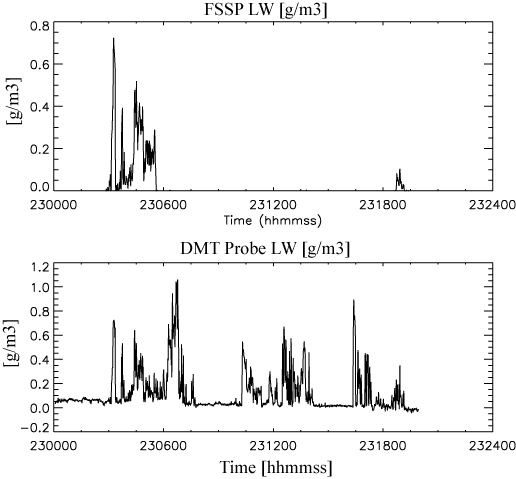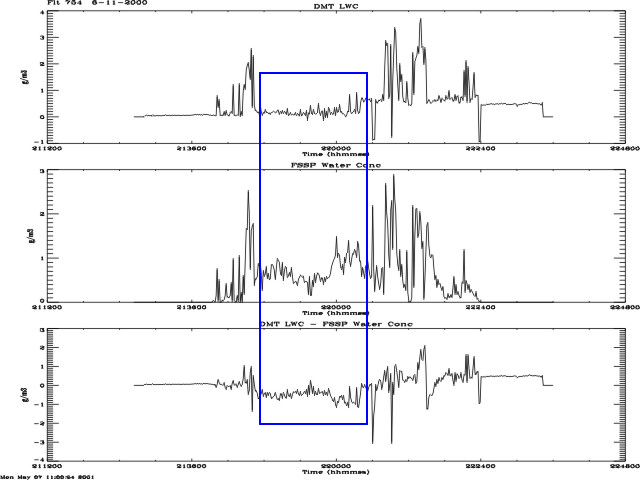The FSSP is an optical particle counter, meaning that it detects and sizes particles by measuring how they interfere with a laser passed between two pylons. The laser is focused from the source onto an optical stop placed on top of a right angle prism. Since the instrument is designed to read very low intensity light being scattered out of the main beam, the full power laser would overload the collection optics. As particles flowing through the air stream encounter the laser, they scatter light from the beam in all directions. Some of this light hits the collection optics and is directed by a right angle prism into a beam splitter.
Once split, each half of the beam is directed to a photodetector. One of the photodetectors is masked so that it only receives scattered light when the particle passes at least 1.5mm from the center of the beam. Whenever this case is detected, any particles detected on the main detector are neglected. This prevents larger particles from glancing the very edge of the beam and being recorded as smaller drops.
The main detector calculates the size of the scattering particle by using the Mie scattering model. This generates a near linear relation between incident power on the detector and particle size. The detector's processing electronics categorize each particle into one of 15 discrete size bins which is then passed on to the data logger. Records taken over a period of time can be aggregated together to generate a drop size distribution.
The pictures to the left illustrate how the instrument is mounted on the aircraft and the location of the sensing pod. The dents in the aluminum dome were caused by impacts with large hail during flight.
The FSSP is also susceptible to the effects of the in cloud environment. During campaigns it was known to ice up and drop data (fig 1) as well as count small ice particles as liquid water drops, leading to artifacts in the liquid water totals (fig 2).


